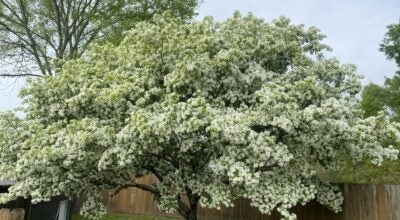Quince rust can affect mayhaws
Published 11:49 pm Tuesday, June 4, 2013
The mayhaw is a popular hawthorn that is grown in the south due to its desirable fruit. The fruit is well known because it is used to make jams and jellies. The mayhaw species that are cultivated include Crataegus aestivalis, C. rufula, and C. opaca, and over time numerous cultivars have been selected due to performance, fruit quality, and disease resistance. One major disease issue when producing mayhaws is the quince rust.
Quince rust is caused by the fungal pathogen Gymnosporangium clavipes. Mayhaw trees can also be affected by a similar rust called the cedar apple rust which is a result of the fungus Gymnosporangium juniperi-virginianae.
These rusts require two hosts for the completion of their life cycle. One part of the life cycle occurs on a juniper host species such as the eastern red cedar which is common in the area. The fungus develops a gall structure on the juniper, and in the spring when the galls mature, the galls swell and develop orange structures which are spores of the fungus that will be released. During this time the gall structures are quite conspicuous.
The next part of the life cycle requires a susceptible host species in the Rosaceae family. Plants in the Rosaceae family that are affected include plants such as the apple, pear, quince, and mayhaw. In the spring the spores that are released from the juniper host species infect the alternate hosts.
The critical point of infection is during the flowering stage. If plants are infected, the fungus leads to the fruit being distorted and unmarketable. When the fruit begins to mature, the fungus develops orange spore structures on the fruit for the dispersal of spores to infect a juniper species to complete the life cycle.
In order to control the disease, the life cycle must be considered. For the quince rust and cedar apple rust, one method of defense is to eliminate the juniper host species.
As mentioned, the eastern red cedar is the primary host in the area, so reduction of the eastern red cedar near plantings can help.
However, in some areas this is not practical due to the number of eastern red cedars. Another method used to reduce rust effects is by selecting more resistant cultivars.
If susceptible cultivars have been planted, the use of a fungicide during the blooming period can be used as a preventative measure. One of the fungicides that can be used is myclobutanil.
This article was compiled by Scotty May, Assistant Extension Agent (ANR) for Washington Parish. For more information concerning this article or related topics, please contact the Washington Parish Extension Office at 985-839-7855.





